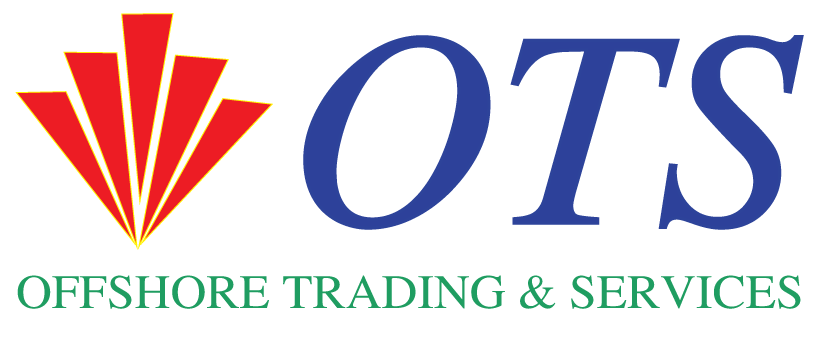Certainly, here is an article written in English, adhering to all your specified requirements.
This article explores the critical role of proactive maintenance, specifically predictive maintenance, in the oil and gas industry to mitigate fire hazards. It delves into strategies for preventing abnormal heat spots, ensuring operational safety and asset integrity through advanced monitoring and analysis.
Proactive Maintenance Planning (Predictive Maintenance) to Prevent Fire Hazards and Early Detection of Abnormal Heat Spots
In the high-stakes environment of the oil and gas sector, where flammable materials and extreme operating conditions are commonplace, the prevention of fire hazards is paramount. Traditional reactive maintenance, where repairs are conducted only after a failure occurs, is no longer sufficient. A paradigm shift towards proactive maintenance, particularly predictive maintenance, has become essential for safeguarding assets, personnel, and the environment. This approach leverages advanced technologies and data analytics to anticipate potential issues, such as abnormal heat spots, before they escalate into catastrophic events like fires.
The Escalating Risk of Fire Hazards in Oil and Gas Operations
The oil and gas industry is inherently exposed to significant fire risks due to the presence of volatile hydrocarbons, high-pressure systems, and complex electrical infrastructure. Ignition sources can arise from various factors including equipment malfunction, static discharge, electrical faults, and human error. When coupled with the continuous operation under demanding conditions, the potential for uncontrolled heat buildup leading to ignition is a constant concern.
– Equipment deterioration: Over time, components like bearings, pumps, compressors, and electrical connections can degrade, leading to increased friction and heat generation.
– Electrical system failures: Overloaded circuits, faulty wiring, or damaged insulation can cause overheating and sparks, serving as ignition sources.
– Process anomalies: Deviations from normal operating parameters, such as elevated temperatures or pressures, can indicate underlying issues that might lead to heat buildup.
– External factors: Environmental conditions like high ambient temperatures or direct sunlight can exacerbate heat generation in certain equipment.
The Predictive Maintenance Imperative
Predictive maintenance moves beyond scheduled or reactive interventions by utilizing real-time data and advanced analytical tools to forecast equipment health and potential failures. By monitoring key performance indicators and identifying subtle deviations from normal operational patterns, predictive maintenance allows for timely interventions, thereby preventing minor issues from escalating into major safety hazards, especially fire risks.
Key Predictive Maintenance Technologies for Heat Spot Detection
A suite of advanced technologies enables the effective detection and diagnosis of abnormal heat spots, forming the bedrock of proactive fire prevention strategies.
– Infrared Thermography: This non-contact method uses infrared cameras to visualize temperature differences across equipment surfaces. Anomalous hot spots, often invisible to the naked eye, are clearly highlighted, indicating potential issues like failing bearings, electrical resistance, or insulation defects. Regular thermographic surveys can establish baseline temperature profiles and identify deviations indicative of impending failure.
– Vibration Analysis: Mechanical equipment in motion generates vibrations. Changes in vibration patterns, such as increased amplitude or the presence of new frequencies, can signal developing problems like bearing wear, misalignment, or imbalance. These mechanical issues often manifest as increased friction and, consequently, elevated temperatures. By analyzing vibration data, maintenance teams can predict bearing failures and other mechanical stresses that could lead to overheating.
– Ultrasound Detection: High-frequency sound waves generated by friction, arcing, or turbulence can be detected using ultrasonic sensors. In electrical systems, arcing or corona discharge can generate ultrasound and also lead to increased heat. In mechanical systems, worn bearings or leaking valves can produce characteristic ultrasonic signatures. These signals can provide early warnings of developing issues before they become significant heat sources.
– Oil Analysis: Analyzing lubricating oil for wear metals, contaminants, and changes in its chemical properties can reveal internal degradation of machinery. For example, increased levels of specific wear metals in the oil can indicate accelerated bearing wear, a common cause of excessive heat. Changes in viscosity or the presence of combustion byproducts can also signal operational anomalies that might contribute to overheating.
– Motor Current Signature Analysis (MCSA): This technique analyzes the electrical current and voltage waveforms of electric motors. Deviations in the motor’s current signature can indicate rotor bar problems, stator winding faults, or bearing issues, all of which can lead to increased motor temperature and potential fire hazards.
Integrating Data for Comprehensive Insights
The true power of predictive maintenance lies in the integration of data from various sources. By combining information from infrared cameras, vibration sensors, ultrasonic detectors, and oil analysis reports, maintenance teams can build a holistic picture of equipment health. This multi-faceted approach allows for more accurate diagnoses and a higher degree of confidence in predictive insights.
– Developing a baseline: Establishing normal operating temperature and vibration profiles for critical equipment under various conditions is crucial.
– Trend analysis: Monitoring deviations from the baseline over time helps identify gradual degradation or sudden anomalies.
– Cross-correlation of data: Correlating data from different sensors can provide confirmation of potential issues. For instance, if infrared thermography shows a hot spot on a pump bearing, and vibration analysis also indicates elevated bearing wear signatures, the confidence in the impending failure prediction increases significantly.
Implementing Proactive Maintenance Strategies for Fire Prevention
A robust proactive maintenance program tailored for fire hazard prevention in oil and gas facilities involves several key components.
– Risk assessment: Identifying critical assets and potential fire ignition points is the first step. This involves understanding the operational context, material properties, and historical failure data.
– Sensor deployment: Strategic placement of sensors, including fixed infrared cameras in high-risk areas and portable devices for routine inspections, is essential.
– Data acquisition and management: Implementing systems for reliable and continuous data collection, storage, and secure access is critical.
– Advanced analytics and AI: Leveraging machine learning algorithms and artificial intelligence to analyze vast datasets, identify complex patterns, and predict failures with greater accuracy is becoming increasingly important. These tools can sift through noise and highlight subtle indicators that might be missed by human analysts.
– Root cause analysis: When an anomaly is detected, a thorough root cause analysis is imperative to understand the underlying issue and implement corrective actions that prevent recurrence.
– Training and expertise: Equipping maintenance personnel with the necessary skills and knowledge to operate predictive maintenance tools, interpret data, and implement effective maintenance strategies is fundamental.
– Integration with safety management systems: Seamlessly integrating predictive maintenance findings into the broader safety management framework ensures that identified risks are prioritized and addressed promptly.
Preventing Abnormal Heat Spots: A Proactive Approach
Abnormal heat spots are often the precursor to more severe equipment failures and potential fires. Proactive maintenance focuses on identifying and rectifying the conditions that lead to these hotspots.
– Lubrication management: Ensuring proper lubrication of rotating equipment reduces friction, a major contributor to heat generation. Predictive maintenance can identify lubrication issues before they become critical.
– Electrical integrity checks: Regular inspections of electrical connections, switchgear, and transformers using thermography can identify loose connections, overloading, or insulation breakdown, which are common causes of overheating.
– Mechanical alignment and balancing: Misaligned or unbalanced rotating equipment can generate excessive vibration and heat. Predictive maintenance tools can detect these issues early.
– Cleaning and housekeeping: Accumulation of dust, debris, or process materials on equipment can impede heat dissipation, leading to elevated temperatures. Regular cleaning is a simple yet effective proactive measure.
– Process parameter monitoring: While not strictly predictive maintenance of hardware, continuous monitoring of process variables like temperature, pressure, and flow rates can reveal operational anomalies that might lead to equipment stress and heat buildup.
The proactive identification and mitigation of abnormal heat spots through predictive maintenance is not merely a best practice; it is a fundamental requirement for ensuring operational continuity, protecting valuable assets, and, most importantly, preventing devastating fires in the demanding oil and gas industry. This strategic investment in technology and expertise builds a resilient and safer operational environment.








